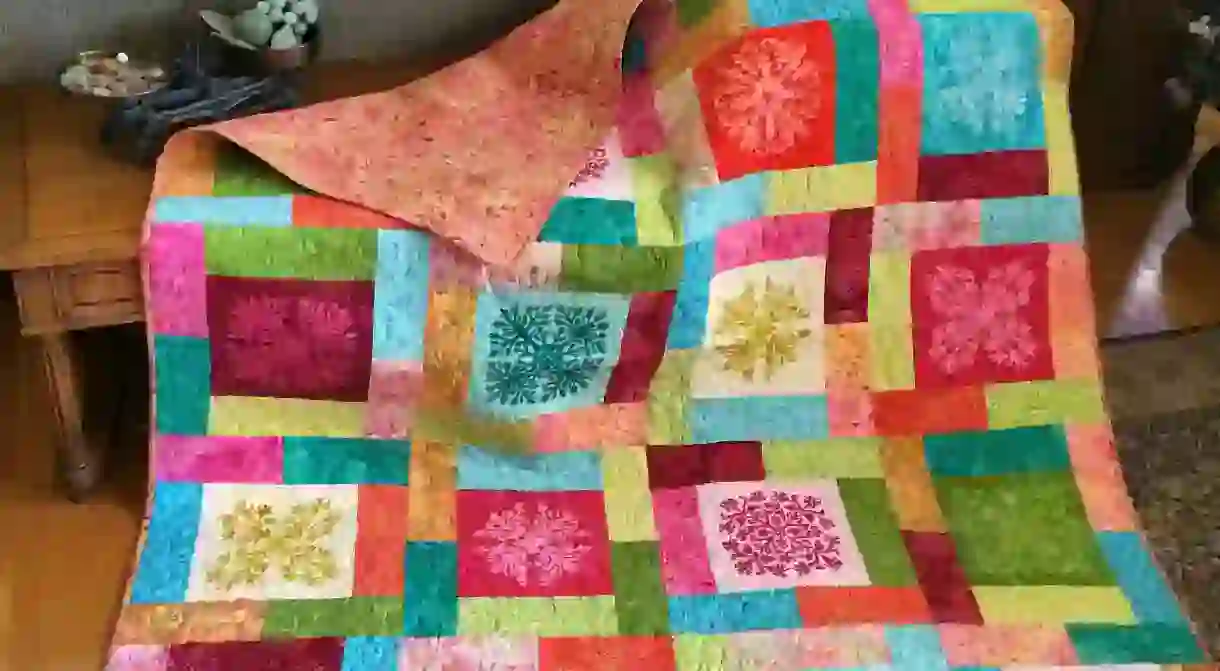An Inside Look at the Art of Hawaiian Quilts

Hawaiians have a long, cherished relationship with textiles.
In 1820 Christian missionaries arrived to Hawaii and brought with them the art of sewing and quilting. Ancient Hawaiian fabric called kapa is made by hand-beating fibers from local plants, then dyeing and decorating it with geometric shapes and patterns inspired by nature. The Hawaiians quickly adopted the custom and added their own artistic style, incorporating Hawaiian culture such as those used in kapa making and elements from the world around them. Thus this unique Hawaiian textile tradition was born.
Many hours of detailed needlework and patience is needed to stitch on the intricate appliqué. Bright colors are mixed with radially symmetrical designs often focusing on Hawaii’s natural beauty, such as ferns, flowers, leaves, and fruit. Some of the most popular motifs are variations on hibiscus, orchid, plumeria, ginger, ulu (breadfruit), pineapple, and kukui (candlenut).

In fact, Hawaiian quilts were not just created for artistic purposes. The overthrow of the Hawaiian monarchy in 1893 and the following events brought about a new era in quilt making. At a time when expressing symbols of the monarchy were considered treason, quilts were used to empower the Hawaiian people and as a silent resistance against American occupation. This era saw designs which included the Hawaiian coat of arms, crowns, flags, and kāhili (a symbol of chiefs and nobles).

An iconic piece of this period is Queen Liliʻuokalani’s colorful “crazy patchwork” quilt, known simply as The Queen’s Quilt, which can be seen in ʻIolani Palace, the seat of the monarchy. It was sewn during her 10-month imprisonment in the palace and showcases important events in Hawaiian history, dates, ribbons, and the names of a few of her supporters.

Today, quilting is still a prominent part of the local culture. They are often given as a present—one that’s cherished and handed down for generations—to a newly-married couple or to welcome a newborn baby. Aside from quilts, locals also sew hot pads, Christmas stockings, bags, table runners, and pillows in the same style.
Visitors can view historical Hawaiian quilts at the Honolulu Museum of Art, Bishop Museum, Parker Ranch Museum, Kauaʻi Museum, and the Mission Houses Museum. If you are not in the islands, the Hawaiian Quilt Research Project has photographed and documented many of these colorful works of art, all available to view online.













